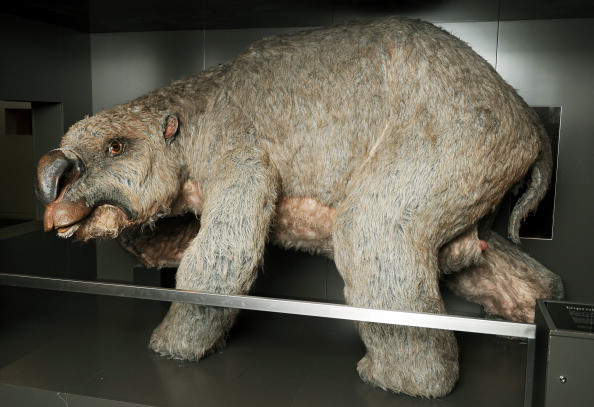Humans hunted giant kangaroos and tortoises as big as cars to extinction in Australia
The extinction of ancient Australia's megafauna has been heatedly debated among scientists for years.
Ancient giant animals that once roamed Australia were not wiped out by climate change as was previously assumed, a study has shown. Human communities that lived on the continent 50,000 years ago might instead have hunted the megafauna to extinction.
Around 45,000 years ago, many of the unique megafauna species that thrived in Australia disappeared. Among the casualties were huge 1,000-pound kangaroos, two-tonne wombats known as diprotodons, and 400-pound flightless birds. There were also 25-foot-long lizards that looked right out of a sci-fi movie, and marsupial lions and tortoises the size of a car were also decimated in just a few hundred years.
"More than 85% of Australia's mammals, birds and reptiles weighing over 100 pounds went extinct shortly after the arrival of the first humans," said Gifford Miller, the author of the new study, published in Nature Communications.
There has been intense debate among scientists regarding the causes of this extinction. Some have blamed a change in the climate, which occurred 70,000 years ago when the forested landscape, covered in eucalyptus trees, turned into an arid landscape with relatively little vegetation.
In these conditions, they argue, it would have been impossible for most of the megafauna to survive. However, human activity may also have played a major role in the animals' extinction.
In this research led by Monash University in Victoria, Australia and the University of Colorado Boulder, the scientists have investigated this issue, using information from sediments, reconstructing a model of past climate and ecosystems on the continent.
Fungus growing on dung
The scientists collected their sediment core off the coasts of Southwest Australia. It was made of pollen, dust, and spores from a fungus that used to grow on the dung of some of the herbivore megafauna – all organised in chronological layers.
The climate and ecosystem model reconstructed based on this sediment core spans more than the last 150,000 years. The fungus spores, which indicates the presence of plant-eating herbivores, were abundant between 150,000 years and 45,000 years ago, but in clear decline after that. This is consistent with the theory that these animals went extinct around that period.

When they investigated what the ecosystem and climate would have looked like 45,000 years ago, their model showed that the Southwest of Australia was covered in lush vegetation, with dense forests that would have been a suitable habitat for most of the megafauna.
"It's a region with some of the earliest evidence of humans on the continent, and where we would expect a lot of animals to have lived. Because of the density of trees and shrubs, it could have been one of their last holdouts some 45,000 years ago. There is no evidence of significant climate change during the time of the megafauna extinction," Miller explained.
Human activity is therefore likely to have been an important cause of the megafauna's demise – but not necessarily through intensive hunting. The team believes that even low-intensity hunting might have caused damage. Early humans in Australia have been shown to have lived alongside some of the megafauna for many thousands of years before the animals became extinct, so human presence is not necessarily associated with a rapid extinction of the animals.
However, killing only one juvenile male every year would still have limited the species' abilities to reproduce, leading to a gradual decline and eventual extinction.
© Copyright IBTimes 2025. All rights reserved.






















